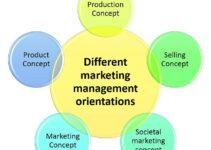Introduction
HR planning makes sure the long growth and productivity of the company. It allows businesses and companies to know about their existing talent and the required talent for the future. When you understand the influence of HRP on the development of the company, then you can align the company’s HR plans with the company’s strategy. Today, we’ll discuss what is human resource planning; its significance, steps, and implementation tools.
What is Human Resource Planning?
Human resource planning (HRP) is the process where the personnel of the HR department recognizes the need for training and current/future recruitment. The objective of HRP is to ensure that the company has the right talent in its various departments. However, the focus of HRP is to assist businesses and companies to identify the areas where the company lacks employment talent. What strategic steps the company should take in order to meet the required talent level in the company.
Significance of Human Resource Planning
HRP plays a significant role because it assists the HR personnel of the company to find out the existing and future employment needs and align them with the company’s talent requirements. Some of the main benefits of human resource planning are as follows;
Long Term Growth
A company has to face a lot of changes relevant to their employees over the period of time in terms of achieving internal promotions, pursuing opportunities, and retiring period of many employees. There are various roles that keep on shifting and the company should fill them. However, HRP makes HR professionals think about the potential changes and keep in mind the hiring needs, potential retirements, and expansion of the department.
Maintain a Competitive Edge
HRP allows businesses and companies to make the training decision and do the recruitment and hiring strategically. HR personnel knows what the employees are looking for like work-life balance, benefits, and other types of compensations relevant to their job. However, HRP also helps them to adapt the latest hiring techniques and offer the latest benefits to the employees.
Adapting the Industry Changes
HRP helps businesses and companies to anticipate the potential changes of talent and adapt the industry changes towards growth and prospering. If the company wants to expand its business operations, then the HR professionals would help you to develop a plan of potential talent, their roles, positions, and budgetary requirements.
Amplify Value of Employees
The emphasis of HRP is on reviewing the job titles of existing employees, skills, and expertise they require in order to perform better in their operations. It also helps HR personnel to identify the leadership traits among employees that have the potential to lead the company in the future and recognize the training need of employees about the skills and expertise they lack. They can save the recruitment cost and invest in training of existing employees.
Steps in Human Resource Planning
Some of the main steps involved in the training of human resource planning are as follows;
Analyzing Offers of Existing Employees
When it comes to evaluating the performance of your employees relevant to the company, some of the factors that you should keep in mind are as follows;
- Education, qualification, and skill of every employee
- Having performance evaluation data of every single employee
- Ages of all the employees because some of them would be closer to retirement
- Benefits packages that you offer to various employees
- Job titles and total employees in the same position
- Number of employees in every department and unit
- Total employees in the entire organization
Along with these factors, you should review the performance report of various departments and speak to their heads that you can improve their performance.
Predicting Future Status of Employees
When you have the data of your employees, then it allows you to make the necessary changes in the employment status of your employees. In order to make the changes, you should have predicted two things;
Supply Forecast
Supply forecast is when HR personnel analyzes the status of their existing employees whether they’re up to the requirements of the company’s talent needs and goals. It allows HR personals to think about things like promotions, layoffs, retirements, and the vacant seats created as a result of it.
Demand Forecast
The focus of the demand forecast is on the total number of employees and talent that you have to match with the future business goals. For instance, a marketing company plans to amplify its videography business. It requires the company to hire ten new employees (videographers) to manage its side business.
Gap Analysis
Businesses and companies use the gap analysis method to contrast the existing and expected performance of employees. It comprises of following factors;
- Creating the strategy to move from current to ideal state
- Recognizing the existing situation
- Developing the ideal situation
- Finding the gap between the current and ideal stage
HR personnel employs the Gap analysis in various steps in order to detach differences between various factors like existing skill level of employees, onboarding strategies, availability of training programs, compensation and benefits, company culture, and quantity of employees.
Integrating HR Plans into Company’s Strategy
When you’re aware of existing talent, future needs of the company, and the gap between both of them, then you can implement the changes in your company. You should speak with the heads of various departments, discuss additional budgeting needs that the upper management plans to do, and revise your HR plans and strategy in order to align them with the company’s goals.
Conclusion: What is Human Resource Planning? Significance & Steps
After an in-depth study of what is human resource planning; its significance, and steps in the process; we have realized that HRP is significant in a company’s recruitment. If you plan to implement it in your organization, then you should follow the abovementioned steps.

Ahsan Ali Shaw is an accomplished Business Writer, Analyst, and Public Speaker. Other than that, he’s a fun loving person.


